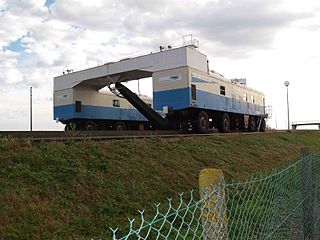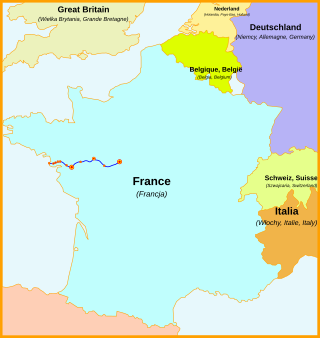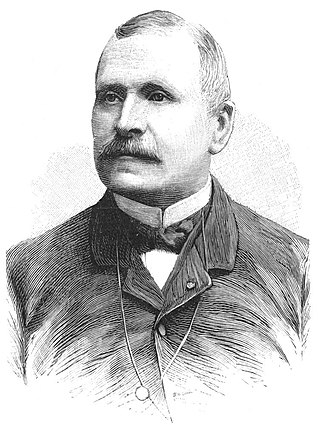Related Research Articles

A dam is a barrier that stops or restricts the flow of surface water or underground streams. Reservoirs created by dams not only suppress floods but also provide water for activities such as irrigation, human consumption, industrial use, aquaculture, and navigability. Hydropower is often used in conjunction with dams to generate electricity. A dam can also be used to collect or store water which can be evenly distributed between locations. Dams generally serve the primary purpose of retaining water, while other structures such as floodgates or levees are used to manage or prevent water flow into specific land regions.

Pierre-Simon Girard was a French mathematician and engineer, who worked on fluid mechanics.

Eugène Freyssinet was a French structural and civil engineer. He was the major pioneer of prestressed concrete.

Claude-Louis Navier was a French mechanical engineer, affiliated with the French government, and a physicist who specialized in continuum mechanics.
The Compagnie des chemins de fer de l'Ouest, often referred to simply as L'Ouest or Ouest, was an early French railway company which operated from the years 1855 through 1909.

Charles Joseph Minard was a French civil engineer recognized for his significant contribution in the field of information graphics in civil engineering and statistics. Minard was, among other things, noted for his representation of numerical data on geographic maps, especially his flow maps.

Adhémar Jean Claude Barré de Saint-Venant was a mechanician and mathematician who contributed to early stress analysis and also developed the unsteady open channel flow shallow water equations, also known as the Saint-Venant equations that are a fundamental set of equations used in modern hydraulic engineering. The one-dimensional Saint-Venant equation is a commonly used simplification of the shallow water equations. Although his full surname was Barré de Saint-Venant in mathematical literature other than French he is known as Saint-Venant. His name is also associated with Saint-Venant's principle of statically equivalent systems of load, Saint-Venant's theorem and for Saint-Venant's compatibility condition, the integrability conditions for a symmetric tensor field to be a strain.

The Pont de Bir-Hakeim, formerly the Pont de Passy, is an arch bridge that crosses the Seine in Paris. It connects the 15th and 16th arrondissement, passing through the Île aux Cygnes. The bridge, made of steel, was constructed between 1903 and 1905, in replacement of a footbridge that had been erected in 1878. The bridge has two levels: one for motor vehicles and pedestrians, the other being a viaduct built above the first one, through which passes Line 6 of the Paris Métro. The bridge is 237 metres (777 ft) long and 24.7 metres (81 ft) wide. The part crossing the Grand Bras of the Seine is slightly longer than the one crossing the Petit Bras.

Jean-Rodolphe Perronet was a French architect and structural engineer, known for his many stone arch bridges. His best known work is the Pont de la Concorde (1787).

Jean Aubert was a French engineer. In 1961, he used the idea of the German engineer Julius Greve from the last century to describe a pente d'eau, which was a way of moving boats up the gradient of a canal without locks. The design consisted of a sloping channel, through which a wedge of water on which the boat was floating could be pushed up an incline. This concept was used in both the Montech water slope and the Fonserannes water slopes.
Jean Résal was a French civil engineer. He was a professor of mechanical engineering at the École polytechnique, and designed several metal bridges in France, especially bridges above the Seine in Paris:

The Gileppe Dam is an arch-gravity dam on the Gileppe river in Jalhay, Liège province, Wallonia, Belgium. It was built in the 1870s to supply water for the wool industry in nearby Verviers. The monumental structure with its unusually thick profile played an important role in establishing an international standard for masonry gravity dams as a technology for major water supply systems. It was considered one of the strongest dams in Europe at the time, and it was the first dam built in modern Belgium. In the first decade of the 21st century, it was noted as supplying most of the drinking water for Verviers, as well as industrial water, and as producing hydroelectricity.

The Paris–Le Havre railway is an important 228-kilometre long railway line, that connects Paris to the northwestern port city Le Havre via Rouen. Among the first railway lines in France, the section from Paris to Rouen opened on 9 May 1843, followed by the section from Rouen to Le Havre that opened on 22 March 1847.

The railway from Tours to Saint-Nazaire is an important French 282-kilometre long railway line, following the lower course of the river Loire. It is used for passenger and freight traffic. The railway was opened in several stages between 1848 and 1857.

Ernest Boulanger was a French politician and economist.

Paul Séjourné was a French engineer who specialized in the construction of large bridges from masonry, a domain in which he made some important innovations.
Émiland Marie Gauthey was a French mathematician, civil engineer and architect. As an engineer for the Estates of Burgundy, he was the creator of a great deal of the region's civil infrastructure, such as the Canal du Centre between Digoin and Chalon-sur-Saône (1784–1793), bridges including those at Navilly (1782–1790) and Gueugnon (1784–1787), and buildings such as the Eglise Saint-Pierre-et-Saint-Paul at Givry and the theatre at Chalon-sur-Saône.
Jean Salençon is a French physicist born on November 13, 1940. He is a member of the French Academy of Sciences and the French Academy of Technologies.
References
- ↑ Donald C. Jackson, Building the Ultimate Dam: John S. Eastwood and the Control of Water in the West (University of Oklahoma Press, 2005), pp. 22–23 online.
- ↑ Charles Couche, Permanent Way Rolling Stock and Technical Working of Railways (London, 1877, translation of French edition) vol. 1, p. 471 online.
- ↑ Annales des ponts et chaussées (Paris, 1852), pp. 93–93 online; Annales des mines 5 (1854), pp. 411–412 online; Auguste Perdonnet, Traité élémentaire des chemins de fer (Paris, 1865), vol. 1, p. 458 online.
- ↑ French Ministry of Agriculture, Commerce, and Public Works, Notices sur les modèles, cartes et dessins relatifs aux travaux publics (Paris, 1867), p. 27 online; Annales des ponts et chaussées 13 (1887), p. 675 online.